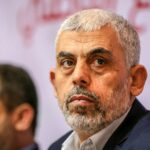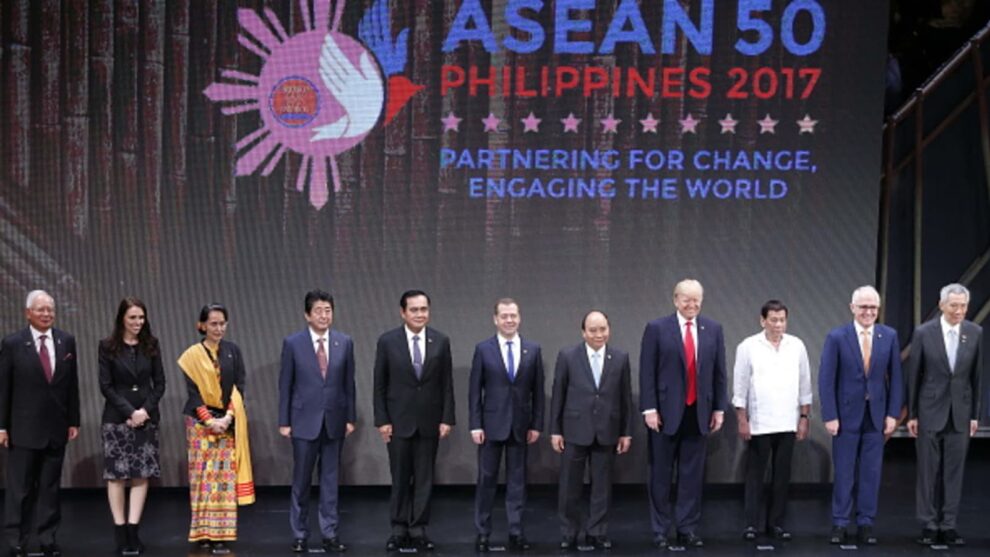When Asia’s premier regional cooperation forum, the East Asia Summit, convenes in Jakarta on September 7, the president of the United States won’t be at the table. President Joe Biden is favoring a later visit to Vietnam instead.
Biden’s decision undercuts U.S. influence in Southeast Asia — turning up is important if only because the East Asia Summit (EAS) matters to the Association of Southeast Asian Nations (ASEAN).
But Biden’s comfort with bypassing Jakarta reflects the fading utility of the East Asia Summit (EAS) to some of the region’s most important external partners.
Today, despite producing long, earnest communiques, the EAS looks gridlocked and impotent when it comes both to great power competition and the forcefulness with which China now presses its interests in Southeast Asia.
The EAS wasn’t built to manage either problem. Still, the hard reality for ASEAN is that the only way to breathe life into the EAS is for it to become more relevant to the management of security in the Indo-Pacific.
The task is not to “choose” a side, but to convince external powers of “the benefits of ASEAN’s strategic role,” as the group’s Secretary-General put it recently.
The stakes are high. A future in which Indo-Pacific leaders pay not much more than ritual lip service to ASEAN centrality is already evident for three key reasons.
First, ASEAN enters a new Indo-Pacific epoch divided and uncertain about the nature of the challenge China poses (even in the South China Sea), the role of the United States in Southeast Asia, and how best to navigate major power competition.
The result is that ASEAN does not speak at the EAS with one voice to either great power, except through carefully mediated, lowest common denominator statements.
Southeast Asia worries about the risk of war, calls for restraint, and has been clear it won’t be forced into “invidious choices.” But none of this amounts to a powerful or complete articulation of ASEAN’s interests in an era of contestation, or of its expectations of the major powers.
Second, when it comes to leaders showing up, the EAS plays second fiddle to other global and regional forums.
America’s commitment is patchy (non-existent under President Donald Trump). Still, at least the U.S. president does sometimes show up. To date, Chinese President Xi Jinping has not, prioritizing the G20 and APEC and deputizing the EAS to his premier.
President Putin did not attend the EAS even before his brutal war of choice in Ukraine made him a global persona non grata.
Third, the real muscle of U.S. and Chinese foreign policy is deployed elsewhere. Washington is using hard and soft power to balance and deter China in the Indo-Pacific and build a multi-polar regional order safe for democracies. The EAS can never be as relevant to these endeavors as revitalized alliances with Japan, South Korea, Australia, the Quad, AUKUS, and even the G7 and NATO.
For its part, Beijing is happier in the “ASEAN plus three” format (ASEAN, China, Japan, and South Korea), a body free from “troublesome” external players. And other forums, such as an expanded BRICs, are seen by Beijing as offering more opportunities to give the global south’s preference for non-alignment a more overtly anti-Western bent.
These three challenges put obvious and reasonable limits on ASEAN’s ability to fix the EAS. But there must surely remain some space for diplomacy that is more creative and conducted with more urgency than we have seen to date from ASEAN.
For example, ASEAN could do more to hold the major powers to account on the principles that are embedded in the group’s own foundational documents.
ASEAN and EAS statements routinely cite these principles, including respect for international law and the peaceful settlement of disputes, but do so in an anonymized and homogenized way.
ASEAN could use the EAS to be clear and specific that it expects China and the United States to apply these principles to Taiwan and to disputes in the South and East China Seas.
It could, speaking as one organization, identify breaches of the principle of restraint, such as China’s attempts to block the re-supply of the Philippines outpost at Second Thomas Shoal.
It could equally encourage the United States to put reasonable boundaries around its relationship with Taiwan and continue to refrain from supporting independence.
ASEAN could demand transparency from all external players on military expenditure and capability development. It could develop and publish its own transparency index.
ASEAN could use the EAS to elaborate its interests in any possible conflict between the United States and China, including the immense economic impact war would have and the safety of its citizens in Taiwan. It could explore practical crisis management mechanisms that would ensure Southeast Asian interests are understood and respected.
It could be more direct and active in supporting dialogue between China and the United States as the best means of managing competition and avoiding the kind of miscalculations that can lead to conflict.
The region could in one voice, for example, be urging Beijing to restart the high-level U.S.-China military dialogues it has suspended.
Southeast Asia could ask China to match its rhetorical commitment to ASEAN centrality by having President Xi Jinping attend the EAS.
And it could similarly request of the U.S. consistency of attention to Southeast Asia and regular attendance at the EAS of the president.
Currently, even such modest steps look out of reach for an ASEAN both divided and perpetually anxious about having anything real to say. But without them, or ones like them, the EAS will drift further to the periphery of great power consideration. A truer expression of Southeast Asian autonomy and agency is needed.
Source : Asia Society















